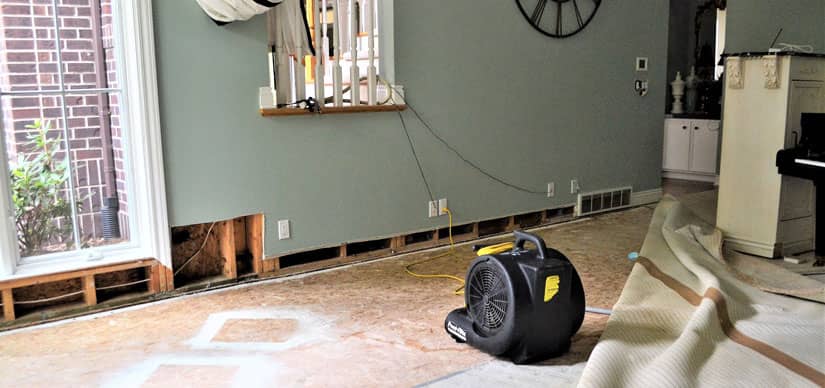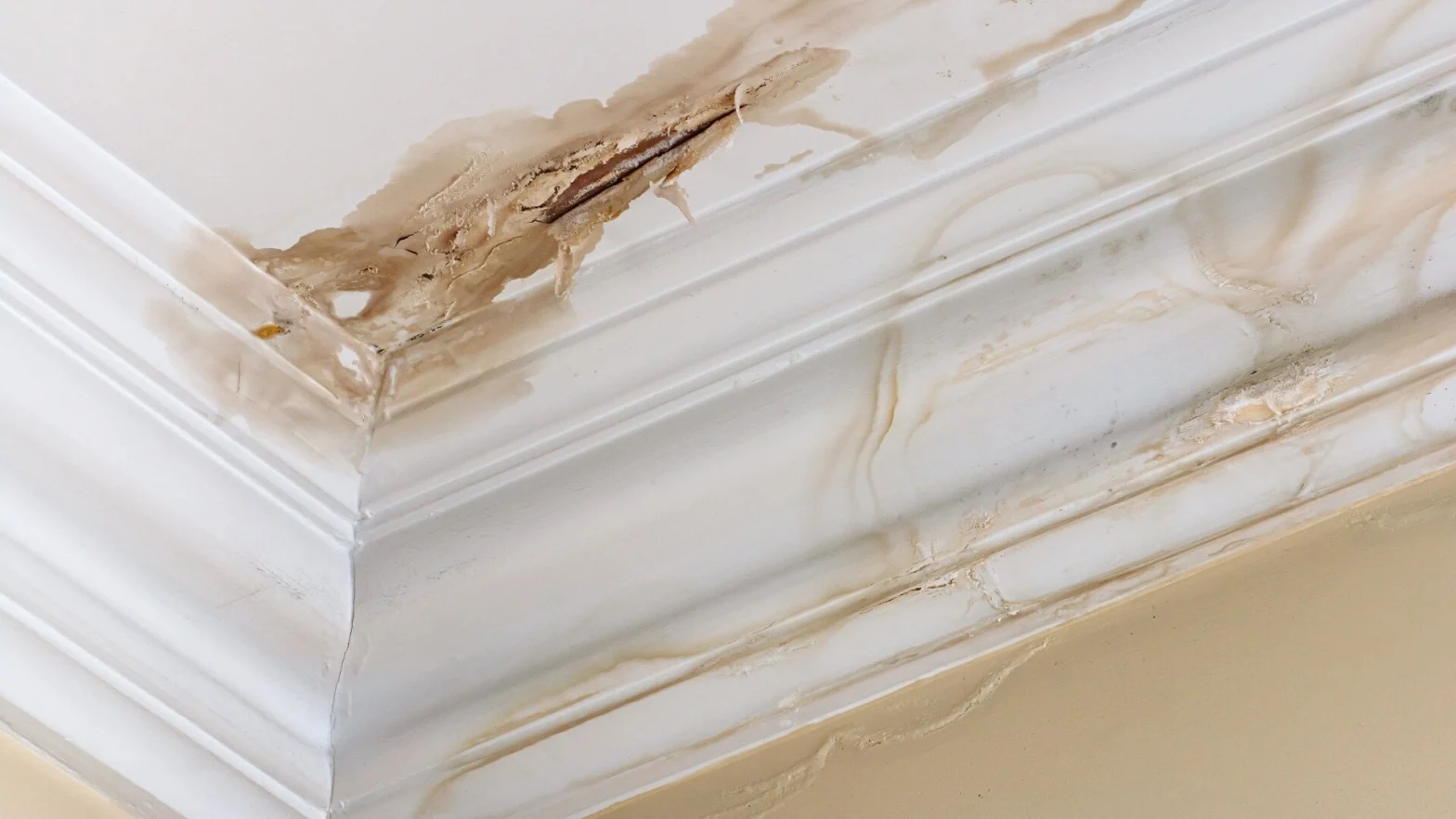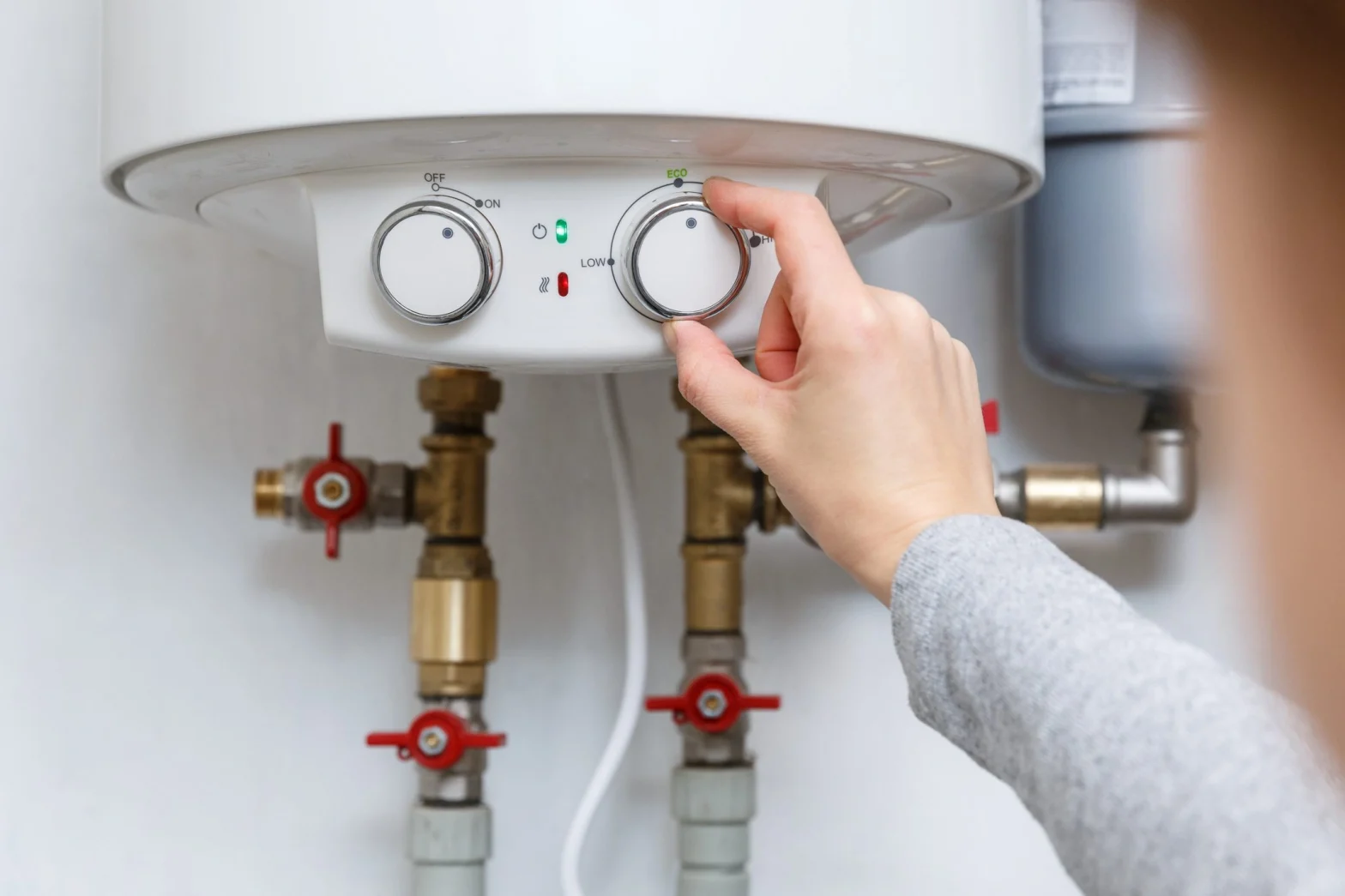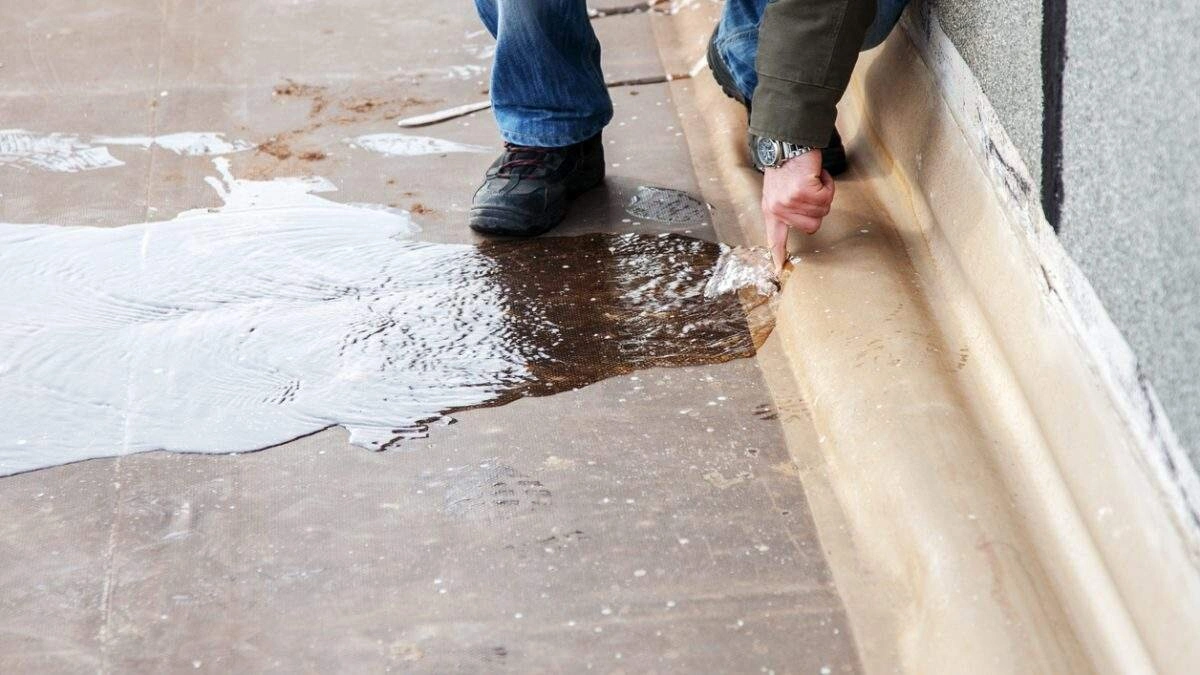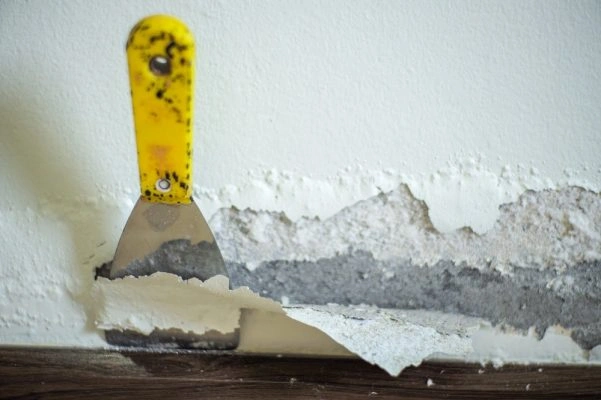Five Steps to Take When You Experience Water Damage
Imagine you just came home from a long day, only to find water seeping through your ceiling or pouring through your bathroom floor. It’s not a fun sight to behold. Or you’ve discovered a water disaster in your home or office, and you’re wondering what to do next. Water damage is no joke. It can throw a wrench in your day.
We’re here to help guide you through the process with our five-step plan for water damage cleanup. From stopping the water to calling in the pros, we’ll take each step together.
Recommended reading: Structural Water Damage Restoration
The key to minimizing the damage is to act quickly, so let’s discuss and figure out how to get your space back to normal as soon as possible. But first, let’s understand what water damage is.
What is water damage?
You’ve probably heard the phrase “water damage” used frequently, but what does it mean?
Water damage occurs when water gets into places it’s not supposed to be, like your walls, floors, or furniture. If it’s not dealt with quickly, it can cause mold, rust, and even structural damage.
Water damage can happen in all sorts of ways, like a leaky roof, a burst pipe, or even a flood. No matter how it happens, it’s important to take care of it ASAP to prevent more water damage from happening.
It can also cause mold, which is a real health hazard. Mold grows in damp, dark places like basements and crawl spaces, and if exposed to it, it can cause respiratory problems and allergic reactions.
Recommended reading: Essential Steps In Restoring A Home After Water Damage?
What should I do immediately after water damage?
If you have water damage, the first thing you should do is stay calm. I know it can be stressful, but you have to take a deep breath and assess the situation.
After that, the most important thing is to stop the flow of water. If it’s something simple, like a leaking pipe, try to find the source of the leak and shut off the water supply to that area.
If it’s something more serious, like a broken pipe or a flood, call a water damage restoration company to help stop the flow of water and that’s where we come in.
Recommended reading: Main Causes Of Water Damage & How To Fix It?
How do I fix water damage?
Here are five ways to fix water damage:
1. Stop the flow of water
This is your first and most important step when you have water damage. If you’re lucky, the source of the water will be obvious. Find it, whether it’s a leaky pipe or a flooding basement, and shut it off. If you’re not sure where the water is coming from or you can’t stop the flow on your own, call in a professional to help.
2. Remove the water
This might seem obvious, but it’s important to get as much water out of your space as possible. Start by using buckets, mops, and towels to remove standing water. If the water level is high or if there’s a lot of water, consider using a wet/dry vacuum to speed up the process. Be sure to wear protective gear, such as gloves and boots, to prevent contact with contaminated water.
After you’ve removed the majority of the water, use fans and dehumidifiers to help dry out the affected area. Open windows and doors to improve air circulation and promote faster drying. It’s crucial to remove moisture as quickly as possible to prevent mold growth and further damage to your property. If the water damage is extensive, you may need to call in professionals who have specialized equipment for water extraction and drying.
3. Dry things out
After you’ve removed as much water as you can, the third step is to start drying things out. The longer water stays in your space, the more damage it can cause, so it’s important to dry everything out as soon as you can.
This means using fans, dehumidifiers, and other drying equipment to pull the moisture out of your walls, floors, and furniture. Depending on the extent of the damage, you might need to call in a professional to help with this step too.
4. Clean and disinfect everything
After the water is gone and things are starting to dry out, you need to clean and sanitize everything that got wet.
This is because water damage can cause mold and mildew to grow, which can lead to all sorts of health problems. So you need to use disinfectants and cleaners to kill any mold or bacteria that might be lurking in your space.
5. Repair any damage
And finally, repair any damage that was caused by the water. This might mean replacing drywall, flooring, or furniture that got ruined by the water. In some cases, you might be able to fix the damage yourself, but for bigger jobs, you might need to call in a contractor or restoration company.
Cali’s Choice Plumbing and Restoration is your all-in-one solution for plumbing problems of any kind. We will talk about how we can help you fix your serious plumbing issues, but before that, remember to wear protective gear like gloves and a mask while following the steps above because some of these chemicals can be harsh.
What Not To Do After Water Damage
When you’ve got water damage, there are some things you should avoid doing at all costs. First and foremost, don’t try to clean up the water yourself, especially if you’re not sure where the water came from or if there’s any electricity involved.
Next, avoid touching wet surfaces or objects with your bare hands. Water can carry bacteria and other harmful substances, so it’s best to be cautious. Also, avoid throwing away any damaged items without first documenting them for insurance purposes. Take pictures and make a list of all the damaged items so you can claim with your insurance company.
Lastly, avoid DIY repairs, especially if you don’t have experience with water damage restoration. Leave it to the pros! Leave it to u
How Cali’s Choice Can Repair Your Home
- Assessment & Identification: We begin by locating the source of the water damage to address the issue at its root.
- Water Removal: Our team efficiently removes all standing water to prevent further damage and mitigate risks.
- Restoration: We assess the extent of the damage and work diligently to restore your home or business to its original condition.
- Insurance Assistance: Navigating insurance claims can be challenging. Cali’s Choice will guide you through the process to ensure you receive the coverage you need.
- Full-Service Construction: To minimize disruption, we offer comprehensive construction services to get your property back to normal as quickly as possible.
- Expert Care: With our extensive experience, you can trust Cali’s Choice to handle your water damage with professionalism and care, making the process as smooth and stress-free as possible.
If you live in Orange County, Riverside County, or San Diego County, and you’ve got water damage woes, give Cali’s Choice a call at (949) 763 5775! We’ll be there to help you get your life back to normal ASAP.
Or, you can contact us directly on our website or on:
San Diego County:(760) 364-9982
Orange County:(949) 506-5268
Riverside County:(951) 783-4366
FAQs
- Is water damage an emergency?
In short, yes. Water damage can lead to serious problems like mold, structural damage, and electrical hazards. - How bad is water damage to a house?
Water damage can be pretty bad. If left untreated, it can cause mold, rot, and even structural damage to your house. - How long does it take for water damage to show?
Water damage can take a while to show. It might not be obvious right away, but you could start to notice issues like discolored walls or flooring, musty smells, or even water spots on ceilings and walls. - Does water damage happen immediately?
Usually, water damage doesn’t happen immediately. It can take hours, days, or even weeks for water damage to start causing problems. The water can seep into walls, floors, and other parts of your home and cause issues over time.
Get in Touch with Your Local Emergency Plumbers Today!
Water damage is not a thing to mess around with. If it strikes, remember these five steps: shut off the water, get rid of all the water you can, dry everything out quickly, clean it up and get rid of any nastiness, and repair any damage. And the sixth one if the damage is much and you need professional help.


